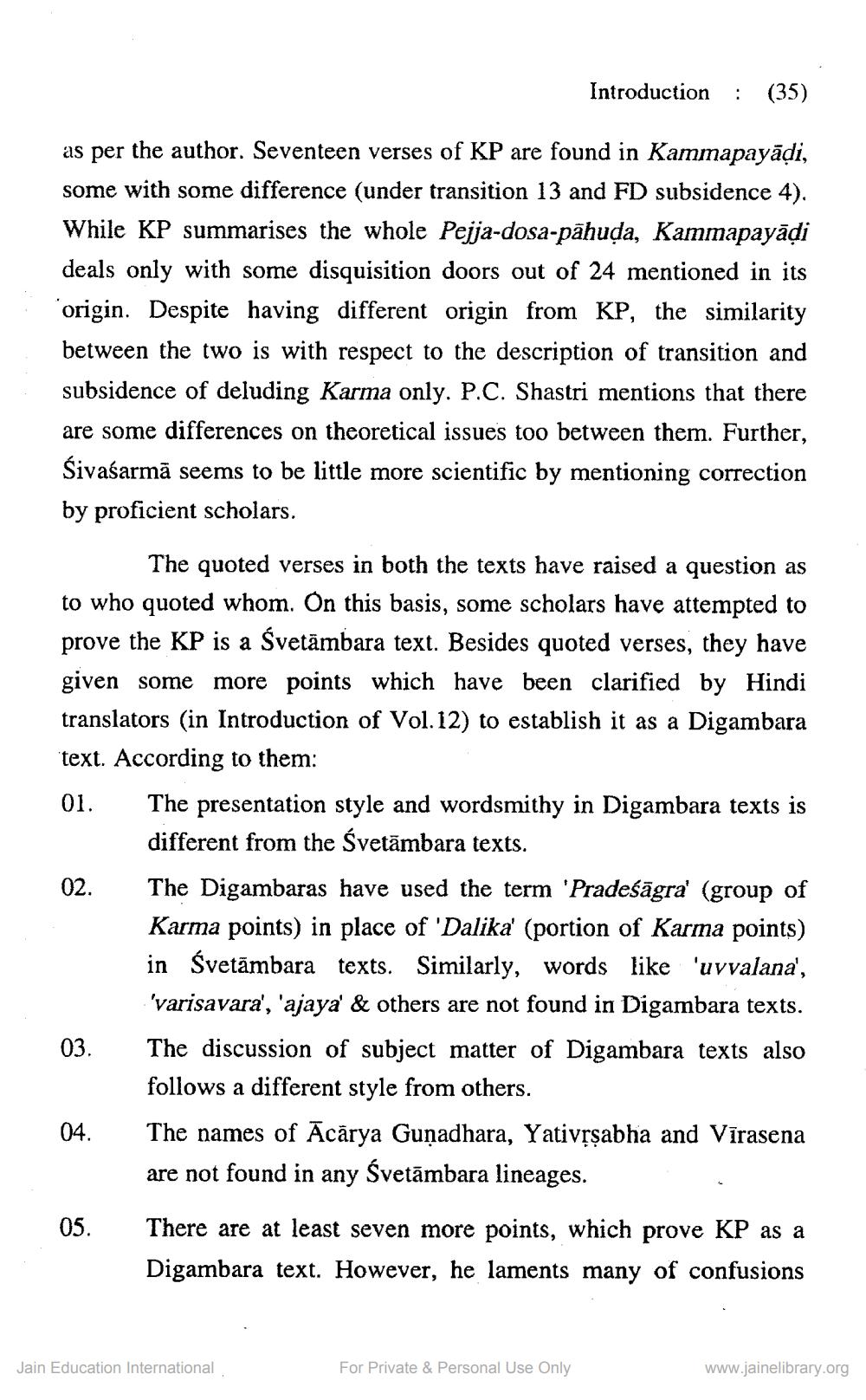________________
Introduction : (35)
as per the author. Seventeen verses of KP are found in Kammapayāḍi, some with some difference (under transition 13 and FD subsidence 4). While KP summarises the whole Pejja-dosa-pähuḍa, Kammapayāḍi deals only with some disquisition doors out of 24 mentioned in its origin. Despite having different origin from KP, the similarity between the two is with respect to the description of transition and subsidence of deluding Karma only. P.C. Shastri mentions that there are some differences on theoretical issues too between them. Further, Śivaśarmā seems to be little more scientific by mentioning correction by proficient scholars.
The quoted verses in both the texts have raised a question as to who quoted whom. On this basis, some scholars have attempted to prove the KP is a Śvetämbara text. Besides quoted verses, they have given some more points which have been clarified by Hindi translators (in Introduction of Vol. 12) to establish it as a Digambara text. According to them:
01.
02.
03.
04.
05.
The presentation style and wordsmithy in Digambara texts is different from the Svetambara texts.
The Digambaras have used the term 'Pradeśāgra' (group of Karma points) in place of 'Dalika' (portion of Karma points) in Śvetambara texts. Similarly, words like 'uvvalana', 'varisavara', 'ajaya' & others are not found in Digambara texts. The discussion of subject matter of Digambara texts also follows a different style from others.
The names of Acārya Guṇadhara, Yativṛṣabha and Vīrasena are not found in any Śvetambara lineages.
There are at least seven more points, which prove KP as a Digambara text. However, he laments many of confusions
Jain Education International
For Private & Personal Use Only
www.jainelibrary.org




